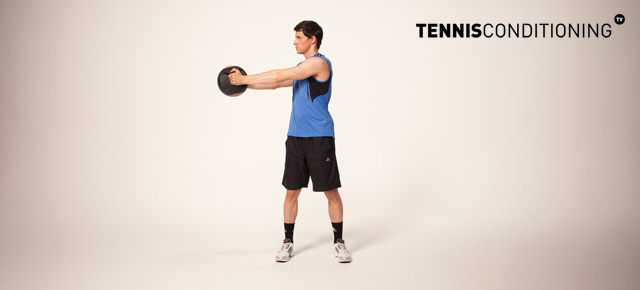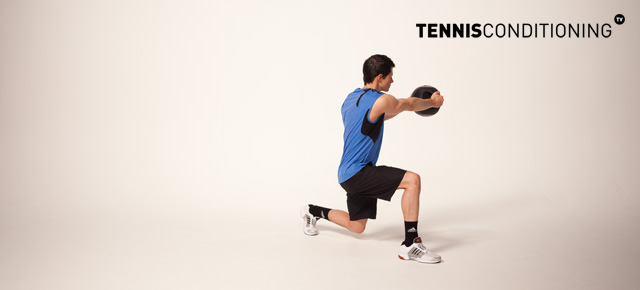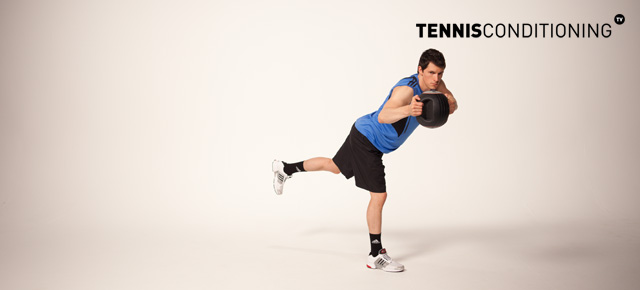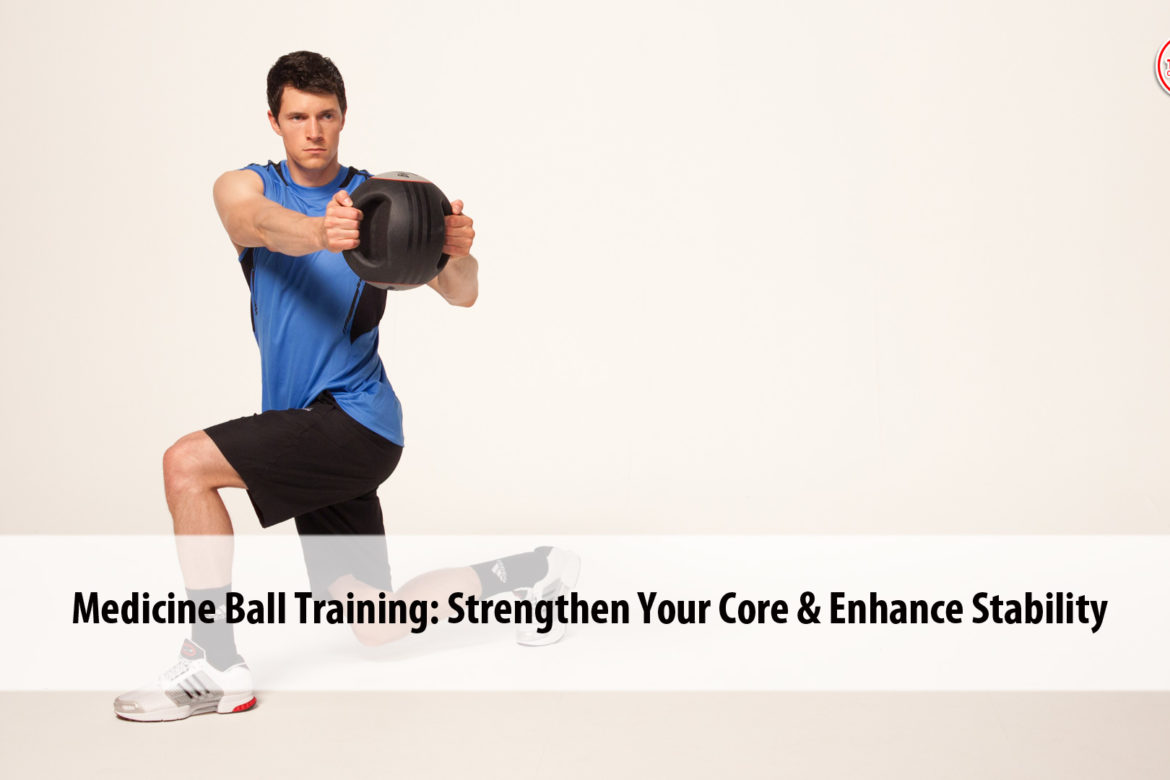The medicine ball training exercises improve the athlete’s body control, balance, stability, coordination and strengthen the core.
Because of the various benefits of the medicine ball training exercises the athletes will have better agility on the court, more powerful shots and improved shot accuracy.
Therefore, we recommend to regularly incorporate the medicine ball training exercises into your strength and conditioning program.
The exercises are progressive with regards to degree of difficulty, which allows you to use the exercises with beginners, advanced athletes or even professionals.
For more information on core training take a look at Why Core Training Is Important and we also have a Core Training Workout for Beginners.
If you are traveling a lot or play tournaments then bringing a medicine ball may be challenging but that shouldn’t prevent you from core training. We have 7 Key Resistance Band Training Exercises for you!
If you want to watch the videos of the medicine ball training exercises click on their headlines.
Medicine Ball Trunk Rotation (Beginners)

Description
- Place 2 agility rings parallel and shoulder-width apart on the ground; face an object/partner
- Step inside agility rings
- Hold a medicine ball (MB) naturally in both hands in front of the trunk
- Take on athletic stance position; knees and hips are slightly flexed; upper-body is straight
- Raise arms to shoulder-level and hold a medicine ball (MB) in both hands in front of the trunk; elbows are slightly flexed
- Rotate the trunk all the way to the left until shoulders are perpendicular to the object/partner(or as far as possible); both elbows remain in initial position; maintain neutral head position; keep looking forward
- Hold position for 1 second
- Rotate the trunk all the way to the right until shoulders are perpendicular to the object/partner(or as far as possible); maintain neutral head position; keep looking forward
- Hold position for 1 second
- Return to starting position
Diagonal Lunge Medicine Ball Trunk Rotation (Intermediate)

Description
- Hold a medicine ball (MB) naturally in both hands in front of the trunk
- Take on diagonal lunge position with the right foot; distribute weight through the heel (flat footed); knees and hips are flexed at 90˚; back remains straight; maintain neutral head position; keep looking forward
- Raise arms to shoulder-level and hold a medicine ball (MB) in both hands in front of the trunk; elbows are slightly flexed; lean forward with the upper-body
- Rotate the trunk all the way to the left until shoulders are perpendicular to the object/partner(or as far as possible); both elbows remain in initial position; maintain neutral head position; keep looking forward
- Hold position for 1 second
- Rotate the trunk all the way to the right until shoulders are perpendicular to the object/partner (or as far as possible); maintain neutral head position; keep looking forward
- Hold position for 1 second
- Return to starting position; switch feet
Single Leg Medicine Ball Trunk Rotation (Advanced Athletes)

Description
- Hold a medicine ball (MB) naturally in both hands in front of the trunk
- Take on diagonal single leg stance position; knee and hip are slightly flexed; non-weight bearing knee is flexed at 90˚; back remains straight; lean forward with the upper-body
- Rotate the trunk all the way to the left until shoulders are perpendicular to the object/partner (or as far as possible); both elbows remain in initial position; maintain neutral head position; keep looking forward
- Hold position for 1 second
- Rotate the trunk all the way to the right until shoulders are perpendicular to the object/partner (or as far as possible); maintain neutral head position; keep looking forward
- Hold position for 1 second
- Return to starting position
Alternating Diagonal Lunge Medicine Ball Rotation (Pro Athlete)

Description
- Hold a medicine ball (MB) naturally in both hands in front of the trunk
- Take on athletic stance position; knees and hips are slightly flexed; upper-body is straight
- Side-Step to the left
- Step into diagonal lunge position with the right foot; distribute weight through the heel (flat footed); knees and hips are flexed at 90˚; back remains straight; maintain neutral head position; keep looking forward
- Raise arms to shoulder-level and hold a medicine ball (MB) in both hands in front of the trunk; elbows are slightly flexed; lean forward with the upper-body
- Rotate the trunk all the way to the left until shoulders are perpendicular to the object/partner(or as far as possible); both elbows remain in initial position; maintain neutral head position; keep looking forward
- Hold position for 1 second
- Rotate the trunk all the way to the right until shoulders are perpendicular to the object/partner (or as far as possible); maintain neutral head position; keep looking forward
- Hold position for 1 second
- Return to starting position; switch feet
Alternating Single Leg Medicine Ball Trunk Rotation (Pro Athlete)

Description
- Hold a medicine ball (MB) naturally in both hands in front of the trunk
- Take on athletic stance position; knees and hips are slightly flexed; upper-body is straight
- Side-Step to the left
- Step into diagonal single leg stance position; knee and hip are slightly flexed; non-weight bearing knee is flexed at 90˚; back remains straight; lean forward with the upper-body
- Rotate the trunk all the way to the left until shoulders are perpendicular to the object/partner (or as far as possible); both elbows remain in initial position; maintain neutral head position; keep looking forward
- Hold position for 1 second
- Rotate the trunk all the way to the right until shoulders are perpendicular to the object/partner (or as far as possible); maintain neutral head position; keep looking forward
- Hold position for 1 second
- Return to starting position; switch legs
Training Zone
In this section we provide you with some more workouts you may be interested in to optimize your training- don’t forget to warm up and stretch out afterwards:
Before you start your workout you may want to warm up to prepare yourself and minimize the risk for injuries.

